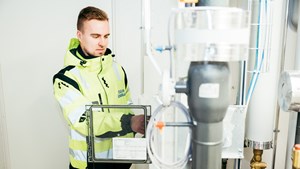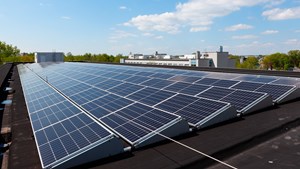Use correctly, maintain, and minimise risks – how to take care of electronic devices at home
All electronic equipment is technical equipment, which occasionally becomes defective. These defects may be due to material defects, improper use or, for example, structural problems such as manufacturing defects. There are several alternative reasons for the failure of electronic equipment and the consequences may be severe. In a two-part blog series, our operations manager, Matti Lehto, guides you through ensuring the safety of electronic equipment.

Author
Name: Matti Lehto
Title: Operations Manager
- operation, maintenance, and construction of the electric power network
The manufacturer's instructions are not for nothing
Electronic equipment must always be used in accordance with the manufacturer's instructions. The device must be intact so it can be used. Similarly, the location of use indicated by the manufacturer must be taken into account – an indoor decorative light transformer should not be inserted into an outdoor socket, as it cannot withstand moisture like an outdoor transformer. Devices used in different locations have their own enclosure classes, which are expressed by the IP rating. The correct IP rating is designed to withstand moisture or dust at the point of use.
Another thing that many people overlook is short-circuit protection. When outdoor extension cables are used and electrical equipment is connected to them, the residual current protection provided by the switchboard or socket is a good life insurance policy, which switches off the electricity if needed. However, old installations and houses do not always have residual current protection. If enough extension cords are linked in succession to the back of the yard, the voltage level will decrease and the short-circuit current will weaken, which means that in the event of a fault, the fuse will not blow as intended. In this case, there is a risk of electric shock.
The function of a fuse and residual current protection is always to protect the operator and to prevent the appliance or the cables from overheating in the event of overload. When the fuse or the CCID (charging circuit interrupting device) switches off the electricity, it is possible to check if the device is working properly. However, if the power fails again, it must be assumed that there is something wrong with the device or the electrical group that needs to be repaired before attempting to operate the device again.
Select the correct socket according to the intended use
As electric vehicles become more common and the heating season approaches, it should be remembered that standard “home sockets” cannot withstand the maximum continuous load required to heat or charge a vehicle, but become hot and pose a risk of fire. An industrial grade outlet and preferably a charging station built for electric cars are needed for the continuous load. Even a heating pole, which is not next to a wall, is much more fire safe than conventional sockets.
Installation and material defects combined with a lack of maintenance cause a significant number of fires every year. Incorrectly installed extension cords cause serious injuries that can even be fatal. In short, as a guideline, it is important for individual electronic equipment to be intact and clean in order to be used, and for it to be used in the right place and in the right way.
Read more about home electrical safety tips in the second part of Matti's electrical safety blog series.



